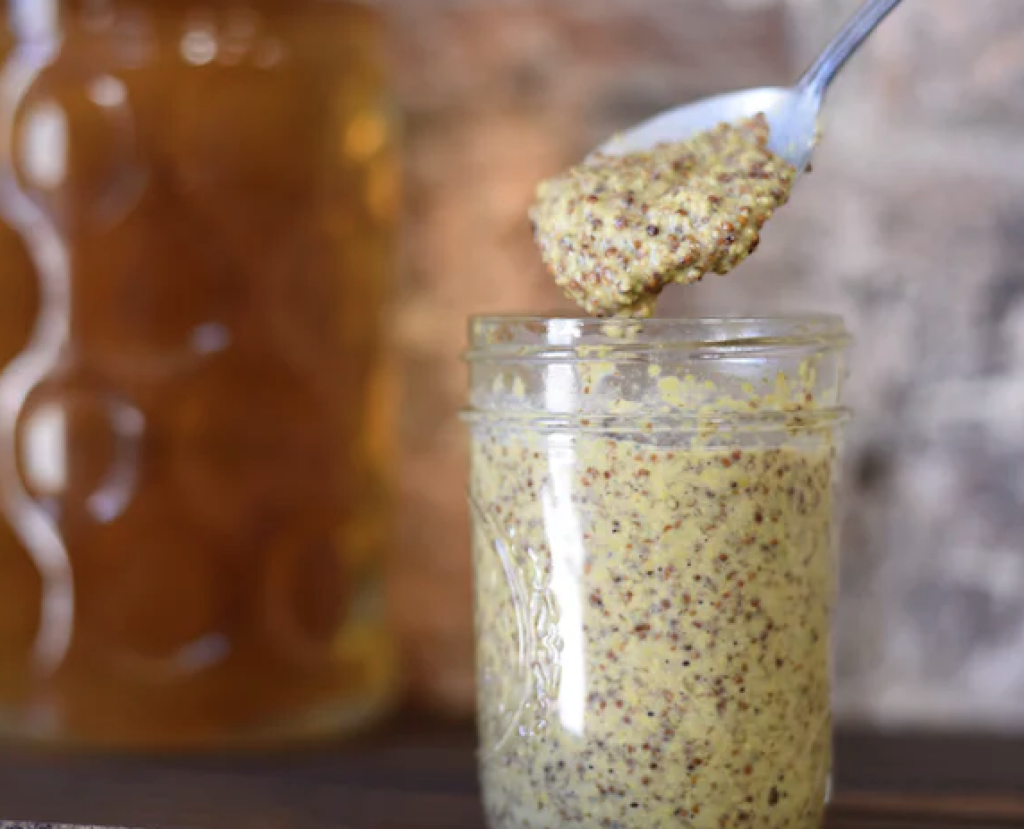Dijon Mustard Is Disappearing?
Dry weather in Canada, the world's largest mustard seed supplier, has caused supplies to dwindle which has sparked a measurable dijon mustard shortage in France.
This article is more than 2 years old
It’s becoming increasingly difficult to find Dijon Mustard these days, with signs on supermarket shelves warning the lucky few who manage to snag a jar that they can only purchase one. While French news outlets attributed the shortage to the war in Ukraine, the real story is a little more complicated than that. A heat wave in Canada, the world’s top mustard seed producer, is to blame for the drastic shortage that has dragged on for months in France.
Although Dijon Mustard is a traditional French condiment, named after the town of Dijon in Burgundy, farmers in the region largely abandoned cultivating the seeds in favor of higher-paying crops decades ago. As a result, manufacturers began looking for the product further afield. Their needs were eventually met by Canada, which produces about 80% of the world’s supply. But their mustard supply began to decrease years ago due to declining production.
So once the dry weather hit Canada in 2021 the crop was obliterated, sending mustard seed prices soaring. Now, French mustard makers are aiming to boost production at home in Burgundy. Addressing the shortage of Dijon Mustard, President of the Burgundy Mustard Association Luc Vandermaesen said it’s important to increase the local share to face weather risks that differ from one country to the other. “We can’t put all our eggs in one basket,” he told NPR.
The Dijon region has been famous for its mustard seeds since the Middle Ages. But production has been decimated by pests since the chemicals used to eliminate them have been banned. Output was divided by three between 2017 and 2021, falling from 12,000 tons to 4,000 tons. As a result, French producers were urged to more than double the area planted with mustard seeds to 10,000 hectares in June. “The Canadian problems revived the importance of the local sector,” President of the Association of Mustard Seeds Producers of Burgundy, Fabrice Genin said.

As an incentive, Dijon Mustard makers agreed to pay €2,000 ($1,993) per ton for Burgundy seeds in 2023. That’s €7,000 ($6 979) up from last year’s €1,300 ($1,296), and more than double what they paid in 2021. Fortunately, the appeal seems to be working, with 10,000 hectares planned for mustard seeds, according to Jerome Gervais, a mustard expert at the chamber of agriculture in Burgundy’s Cote d’Or department. He explained that the number of seed producers increased from 160 to more than 500.
Even a farmer who gave up mustard seed production in 2019, after his fields in Agencourt were wrecked by a dry spring and an insect infestation, decided to resume planting the key ingredient for Dijon Mustard. He said the price offered for the crop allowed him to bring them back, even though Russia’s invasion of Ukraine has made fertilizer more expensive. A drop in the prices of grains and oilseeds has also made mustard seeds more attractive. “It’s sort of a revenge for us to be able to replant a local crop,” Francois Detain explained.
Additionally, shipping costs which have spiked due to the supply chain crisis have also given an edge to Burgundy seeds over those from Canada. By next year, the region should be producing 15,000 tons of mustard seeds, meeting 40% of mustard makers’ needs. That means folks can expect to see Dijon Mustard back on store shelves by October, with the shortage expected to be completely resolved by 2023.




